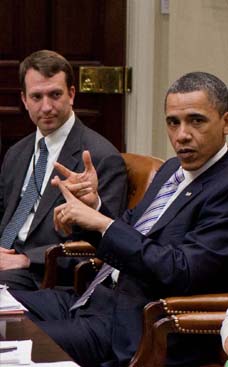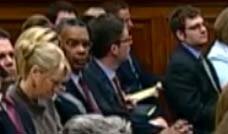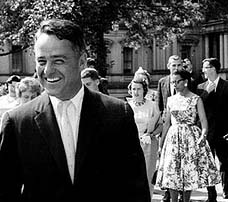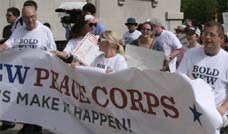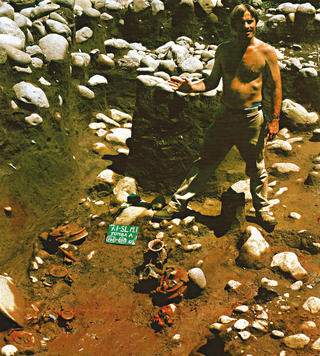
The first clear evidence of the presence of indigenous peoples in Costa Rica was brought to light by this author in 1975, in the form of an extensive quarry and workshop site in the southern Turrialba Valley, shortly after forming the first archaeological research department of the National Museum. The first students hired by the National Museum were undergraduates, and had, at that time, a minimum of training in archaeology and anthropology. When we made our first surface collections at the site, sugar cane fields plowed to 50 centimeters deep during the last 50 years and exhibiting three clearly defined terraces, the five students did not recognize the chipped stone tool types, although they did recognize the type of stone they were made from: chert. The stone is much like flint, with a glassy texture that facilitates chipping or knapping, as it is sometimes called.
RPCV Michael J. Snarskis writes: Costa Rica 10,000 Years Ago: Evidence of the Earliest Known Peoples
Costa Rica 10,000 Years Ago: Evidence of the Earliest Known Peoples
By Michael J. Snarskis
The first clear evidence of the presence of indigenous peoples in Costa Rica was brought to light by this author in 1975, in the form of an extensive quarry and workshop site in the southern Turrialba Valley, shortly after forming the first archaeological research department of the National Museum.
The first students hired by the National Museum were undergraduates, and had, at that time, a minimum of training in archaeology and anthropology. When we made our first surface collections at the site, sugar cane fields plowed to 50 centimeters deep during the last 50 years and exhibiting three clearly defined terraces, the five students did not recognize the chipped stone tool types, although they did recognize the type of stone they were made from: chert. The stone is much like flint, with a glassy texture that facilitates chipping or knapping, as it is sometimes called.
Two finished clovis points
Therefore, I did not see the key, diagnostic spear points that immediately told me we were dealing with a very old, pre-ceramic, pre-agricultural site until we were back in the National Museum washing the collected materials.
What I saw was amazing and gratifying, a landmark discovery in Costa Rican archaeology.
Samples included two Clovis-like spear points (named after Clovis, New Mexico, where they were first identified in the 1920s), sometimes called waisted Clovis because they become narrow toward the base and then flare slightly outwards again. They are like most Clovis-type spear points found in the eastern United States.
Another basal fragment and a medial one conform more to the classic Clovis points of the American southwest in that they are not waisted. At a large woolly mammoth kill site in Arizona, 13 classic Clovis and waisted Clovis spear points were found. Given the context (the mammoth, an elephant-like creature with huge upward-curving tusks, has been extinct for millennia), the two types of Clovis points apparently were in use at the same time and place.
At the Turrialba site, we found several Clovis point fragments and dozens of performs a larger, intermediate stage in the manufacture of Clovis spear points. All such points and performs are fluted, a term used by archaeologists to describe the obvious vertical channel flaked off by their makers, which served to better anchor the hafting of the point to a spear pole. Many bifacial chipped and pressure-flaked spear points broke during manufacture, and were abandoned at the site.
We also found many types of scrapers (the thinner, finely flaked ones probably used to process hides; the thicker keeled scrapers used for digging out wood or marrow from large bones), drills, engravers, knives of many kinds, hammer stones, and a huge amount of chipping debris (debitage) and cores for striking off sharp flakes and blades.
What makes the Turrialba site uniquely valuable from an archaeological point of view is this evidence, suggesting that the earliest humans in Costa Rica lived and worked there. Two other Clovis points have been found elsewhere, but alone, with no associated occupation and working areas. One was found embedded in the subsoil exposed by wave action at Lake Arenal. It was probably a thrown spear, not recovered for some reason.
Weeks later in the surface collecting, we discovered what is known in archaeology as a fishtail or Magellan spear point complete, undamaged, and clearly different in form from the Clovis-type points. While the latter mostly are found in North America, the former are widespread throughout South America. The only places where these two Paleoindian spear points are found together are Costa Rica and Panama.
Costa Rica has many more Clovis-type points (northern origin) than fishtail points (southern origin). The fascinating thing about the discovery of these two early spear point types is that, apparently, the role of Costa Rica as the archaeological crossroads of the Americas seems to have begun as early as 10,000 to 13,000 years ago.
This overlapping of larger cultural spheres of influence characterizes Costa Rica s prehistory up until the Spanish arrival in the early 1500s.
The Paleoindians or Early Man
An important fact, generally unknown to the general public, is that in all the Americas, only homo sapiens (modern humans) are found. No biological human evolution took place in the Americas that all occurred in Africa, especially, as well as in Europe and Asia (beginning in Africa as early as five million years ago.)
Although the earliest homo sapiens are at least as old as 100,000 years in Europe, Asia, and Australia, it is believed humans first entered the Americas by walking across the then frozen Bering Strait sometime between 13,000 and 20,000 years ago, perhaps in the pursuit of game.
The author, at left, discusses the identification and classification of stone cutting artifacts found near Turrialba with Renato Messina of the University of Montreal. Photograph by James Kielland
And what game it was! They hunted mammoths, mastodons (much older than mammoths, perhaps by a million years, although they survived long enough to be the prey of the earliest humans in the Americas, Paleoindian spear points have been found between the ribs of a mastodon in northern South America), giant sloths, cave bears, saber-toothed tigers and many other late Pleistocene megafuana (giant animals that lived at the end of the last Ice Age, all of which are now extinct).
Many mastodon bones have been found in Costa Rica, and my first excavation in 1974 was of a partial skeleton of a young mastodon in a streambed in the San Jos� suburb of Tib�s. A complete tusk, many sets of teeth, leg and pelvic bones were found. Although conserving beautifully their original shapes, and even surface finish and color, they were softer than over-ripe tomatoes and had to be removed in plaster casts.
We eagerly sent in bone samples for Carbon 14 dating, only to be told that our beautiful mastodon bones and teeth had no organic material whatsoever, all of it having been replaced by minerals, making C-14 dating impossible. This meant that our young mastodon had died more than 50,000 years ago, and perhaps hundreds of thousands of years before, far earlier than the first humans to arrive in Costa Rica.
The Paleoindian peoples were hunters and gatherers, living in non-permanent camps, probably in bands of only 20-30 people. They followed the harvest cycles of fruit and nut-bearing trees and bushes, as well as the movements of animals. Very frequently, their camps were located on bluffs above streams or rivers where animals came to drink; such is the case at the Turrialba site. As the saying goes, their lives were likely nasty, brutish, and short, with life expectancy averaging 35-40 years.
The Americas, both north and south, were a big game hunter s paradise. Having never seen humans before, the animals had little fear of them, although this must have changed rapidly. Still, fishtail spear points have been found in Patagonia, the southernmost tip of South America, Carbon-14 dated to more than 11,000 years ago.
Although it seems extraordinary, homo sapiens may have migrated from Alaska to Patagonia, hunting all the way, in only about 1,000 years.
Michael J. Snarskis is one of Costa Rica's foremost archaeologists. A graduate of Yale University, Dr. Snarskis received his Ph.D. from Columbia University and directed the Archaeological Research Program at the National Museum of Costa Rica for 10 years and was a professor of archaeology at the University of Costa Rica for 14 years. He guides tours to Guayabo National Monument and the archaeological museums of San Jos�. For further information contact Dr. Snarskis at snarskis@arqueocostarica.org
This article is a part of a series that first ran in Costa Rica Outdoors magazine. ArqueoCostaRica.org would like to thank Costa Rica Outdoors for allowing us to run these articles, and we encourage you to visit their website.








